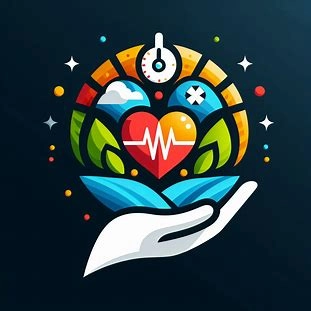News And PoliticsCommunications And EntertainmentSports And FitnessHealth And LifestyleOthersGeneralWorldnewsBusiness And MoneyNigerianewsRelationship And MarriageStories And PoemsArts And EducationScience And TechnologyCelebrityEntertainmentMotivationalsReligion And PrinciplesNewsFood And KitchenHealthPersonal Care And BeautySportsBusinessFamily And HolidaysStoriesIT And Computer ScienceRelationshipsLawLifestyleComedyReligionLifetipsEducationMotivationAgriculturePoliticsAnnouncementUSMLE And MedicalsMoneyEngineeringPoemsSocial SciencesHistoryFoodGive AidBeautyMarriageQuestions And AnswersHobbies And HandiworksVehicles And MobilityTechnologyFamilyPrinciplesNatureQuotesFashionAdvertisementChildrenKitchenGive HelpArtsWomenSpiritualityQuestions AnsweredAnimalsHerbal MedicineSciencePersonal CareFitnessTravelSecurityOpinionMedicineHome RemedyMenReviewsHobbiesGiveawayHolidaysUsmleVehiclesHandiworksHalloweenQ&A
Top Recent
Loading...
You are not following any account(s)
profile/5683FB_IMG_16533107021641748.jpg
News_Naija

Rema Becomes First African Artiste To Feature On Rolling Stone Cover I'm Being Victimised, My Suspension Meant To Silence Me- Natasha
~1.3 mins read
Nigerian music superstar, Divine Ikubor, popularly known as Rema, has made history as the first African artiste to feature on the cover of Rolling Stone magazine. Rolling Stone is an American monthly magazine that focuses on music, politics, and popular culture. According to Rolling Stone, the Afrobeats sensation known for breaking boundaries on the global stage is the Cover Star for the April edition of the prestigious magazine. Mavin Records lauded the uncommon feat with a post on its official Instagram page. “Rave Lordé Rema the Afrobeats Visionary, makes history as @Rollingstone USA First African Cover Star!” the record label wrote. Following the recognition, the ‘Heis’ crooner thrilled audiences with an electrifying performance at the Rolling Stone concert, performing some of his hit songs, including ‘Dumebi’, ‘Woman’ and ‘Calm Down’. This milestone has further cemented Rema’s place as a trailblazer for African music, as this feat is coming shortly after he was highlighted on the cover of Dazed Magazine, another major international platform. Rema, born in 2000 in Benin City, came to the limelight in 2019 after signing with Mavin Records. His rising profile has continued to highlight Afrobeats on the global stage, as his hit song “Calm Down” featuring Selena Gomez became the most streamed Afrobeats track in history, earning him multiple platinum certifications. The song also broke records as the first African-led track to surpass a billion on Spotify streams, dominating international charts. ‘Calm Down’ became the number one hit on the world’s first regional streaming chart and first-ever official chart in the Middle East and North Africa, earning Rema a Guinness World Record. Among other global showcases, Rema has also made history as the first African artiste to perform at the prestigious Ballon d’Or ceremony, when he thrilled the audience at the 2023 Ballon d’Or ceremony in Paris, France. NAN
Read more stories like this on punchng.com
dataDp/1032.jpeg
Worldnews

As Deadly Storms Subside, Texas Flooding Puts Spotlight On Govt Response
~2.5 mins read
Questions are mounting about what, if any, actions local officials took to warn campers and residents. The hope of finding survivors of the catastrophic flooding in the US state of Texas continues to dim a day after the death toll surpassed 100, and crews kept up the search for people missing in the aftermath. As the storms that had battered the Hill Country for the past four days began to subside, more attention was being paid to the government’s response. Questions are mounting about what, if any, actions local officials took to warn campers and residents who were spending the July Fourth holiday weekend in the scenic area long known to locals as “flash flood alley”. At public briefings, officials in hard-hit Kerr County have deflected questions about what preparations and warnings were made as forecasters warned of life-threatening conditions. “We definitely want to dive in and look at all those things,” Kerrville City Manager Dalton Rice said on Monday. “We’re looking forward to doing that once we can get the search and rescue complete.” Some camps were aware of the dangers and monitoring the weather. At least one moved several hundred campers to higher ground before the floods. But many were caught by surprise. Debate has also intensified over how state and local officials reacted to weather alerts forecasting the possibility of a flash flood and the lack of an early warning siren system that might have mitigated the disaster. On Monday, Texas Lieutenant Governor Dan Patrick promised that the state would “step up” to pay for installing a flash-flood warning system in Kerrville by next summer if local governments “can’t afford it”. “There should have been sirens,” Patrick said in a Fox News interview on Monday. “Had we had sirens here along this area … it’s possible that we would have saved some lives.” The Houston Chronicle and New York Times reported that Kerr County officials had considered installing a flood-warning system about eight years ago, but dropped the effort as too costly after failing to secure a $1m grant to fund the project. In San Antonio and in Washington, Democrats are questioning whether cuts at the National Weather Service (NWS) affected the forecasting agency’s response to catastrophic and deadly flooding in Central Texas. The White House and Texas Governor Greg Abbott have denied the allegations and accused them of “politicising” the disaster. The NWS’s San Antonio office is responsible for forecasting the area’s weather, collecting climate data and warning the public about dangerous conditions. Texas officials criticised the NWS over the weekend, arguing it failed to warn the public about impending danger. The office issued a stream of flash flood warnings on Thursday and Friday across its digital and radio services, which are used to communicate with public safety professionals, according to alert records. The messages grew increasingly urgent in the early hours of Friday morning. The team sent an emergency text message to area mobile phones at about 1:14 am, calling it a “dangerous and life-threatening situation”. Phones must have reception or be near a cell tower to receive that message, said Antwane Johnson, former director of the Public Alert Team for the US Federal Emergency Management Agency (FEMA). Mobile coverage is spotty in areas around the Guadalupe River, according to Federal Communications Commission records last updated in December. “Even though those messages were issued, it does not mean it got to the people who needed them,” said Erik Nielsen, who studies extreme rain at Texas A&M University. Here’s a closer look at the timeline of how the floods hit Texas and what warnings were sent when: Follow Al Jazeera English:...
Read this story on Aljazeera
profile/5170OIG3.jpeg.webp
Healthwatch

What Can Magnesium Do For You And How Much Do You Need?
~5.7 mins read
This forgotten mineral is having a moment.

cardiovascular disease, including high blood pressure or coronary artery disease
insomnia
migraines
anxiety
diabetes and diabetic neuropathy
muscle soreness after exercise
constipation.
malnutrition (or simply choosing a diet that’s low in magnesium)
gastrointestinal conditions (such as Crohn’s disease) that cause vomiting, diarrhea, or poor absorption of magnesium
kidney disease, some types of which cause excess loss of magnesium in the urine
medications like diuretics or certain types of chemotherapy
alcohol use disorder, because alcohol can boost the loss of magnesium in the urine.
magnesium citrate, which is often taken as a laxative for gut health
magnesium glycinate, which is commonly promoted for improved sleep and reduced anxiety
magnesium oxide, which tends to be taken for constipation or indigestion.

In the world of nutrients, minerals, vitamins, and supplements, magnesium seems to be having a moment. Perhaps it’s long overdue: in many ways, magnesium has been overlooked, underappreciated, or even forgotten. That may be ending.
But why is magnesium getting so much attention lately? Are claims about its benefits true? Are you getting enough magnesium, or should you join the rising number of people who take magnesium supplements every day? If you have these questions, this post is for you.
What is magnesium?
Magnesium is a mineral the human body needs to function properly. It’s especially important for a healthy cardiovascular system, nerves, muscles, and bones. It helps regulate the body’s calcium and blood sugar levels, and it’s vital for the body’s production of protein. And that’s just the short list: more than 300 chemical reactions in the body rely, at least in part, on magnesium.
Are you getting enough magnesium?
Most of us don’t need to fret over how much magnesium we’re getting. The recommended daily amount of magnesium — 320 milligrams (mg) a day for women and 420 mg a day for men — isn’t difficult to take in through a healthy diet.
But getting extra magnesium is important for people with magnesium deficiency, and those who have complications of pregnancy known as preeclampsia and eclampsia.
More limited evidence suggests that extra magnesium could also be helpful for people with:
There are even studies suggesting that magnesium supplements might help with brain health and smoking cessation.
Many studies of the potential benefits of magnesium are quite small, and some have inconsistent results. Despite the shaky evidence for many claims, this large and expanding list of proposed health benefits is one reason magnesium supplements have been increasingly popular in recent years.
Is there a test to check magnesium levels?
A blood test can measure whether you’re getting enough magnesium. The normal range for blood magnesium is 1.7 to 2.2 milligrams per deciliter (mg/dL).
In general, the body does a great job of regulating the blood levels of magnesium. If levels rise, the kidney dumps excess magnesium into the urine; if levels fall, the kidneys hold onto more magnesium, bones release the mineral into the circulation, and the intestinal absorption of magnesium from the diet increases.
What are the symptoms of low magnesium?
The symptoms of too little magnesium (hypomagnesemia) include nausea, fatigue, and reduced appetite. Of course, these symptoms can be due to many other conditions, such as a stomach bug or medication side effects.
When severe, low magnesium may cause numbness in the arms and legs, muscle cramps, and an abnormal heart rhythm.
Some common causes of magnesium deficiency are:
Studies also suggest that magnesium deficiency is common among adults over age 70. The reasons include low intake of magnesium, poor absorption in the digestive tract, use of certain medicines, and kidney disease.
What are the symptoms of too much magnesium?
The symptoms of too much magnesium (hypermagnesemia) include nausea, headache, muscle weakness, and trouble breathing.
Hypermagnesemia is quite rare. Most people with higher-than-normal blood levels of magnesium have kidney failure. Others may be taking too much magnesium in supplements or taking certain medicines (such as magnesium-containing laxatives).
Which foods are good sources of magnesium?
Magnesium-rich foods like green, leafy vegetables (such as spinach), beans, nuts, and whole grains will help you get there. Pumpkin seeds, soy milk, bananas, and dark chocolate (in moderation!) are also good sources.
Eating one serving of spinach, an ounce of almonds, and a banana provides 190 mg of magnesium. That’s nearly 60% of the daily recommendation for women and 45% for men. Fortunately, magnesium is found in many healthy foods, so a good diet (such as the Mediterranean diet) will usually provide all the magnesium that you need.
Should you take a magnesium supplement?
Unless you have a diagnosed or suspected magnesium deficiency, or a condition with clear evidence of benefit such as preeclampsia or Crohn’s disease, there’s no compelling reason to routinely take a magnesium supplement.
For some conditions, such as insomnia or migraine headaches, a magnesium supplement may be worth a try. But it’s a good idea to run this by your doctor first. All supplements come with a risk of side effects. In the case of magnesium, this includes nausea and diarrhea. Magnesium supplements can also interact with other medicines and supplements you’re taking.
Which type of magnesium is best?
Magnesium found in foods is usually the best choice. When needed, magnesium supplements are available in several different forms, including:
All of these can provide extra magnesium. So the choice mostly comes down the reason you’re taking it, whether you experience side effects, cost, and personal preference.
Daily supplements of less than 350 mg usually are considered safe. But when people have certain health conditions such as kidney disease, it can be tricky to get the right amount of magnesium, and monitoring blood levels is important.
It’s safest to check with your doctor if you’re wondering whether to start taking a magnesium supplement, or unsure which one or how much to take.
The bottom line
Most people are fine without paying too much attention to their magnesium status. If you have concerns about whether you’re getting enough magnesium and whether you should take a supplement, ask your doctor about it. But don’t be surprised if you get some familiar advice: Choose a healthy, well-balanced diet. Your body will take care of the rest.
profile/5377instablog.png.webp
Instablog9ja

Comedian Deeone Reacts To A Video OAP Nedu Made About VDMs Arrest
~3.1 mins read
Loading...
 News_Naija
News_Naija
 Worldnews
Worldnews
 Healthwatch
Healthwatch
 Instablog9ja
Instablog9ja